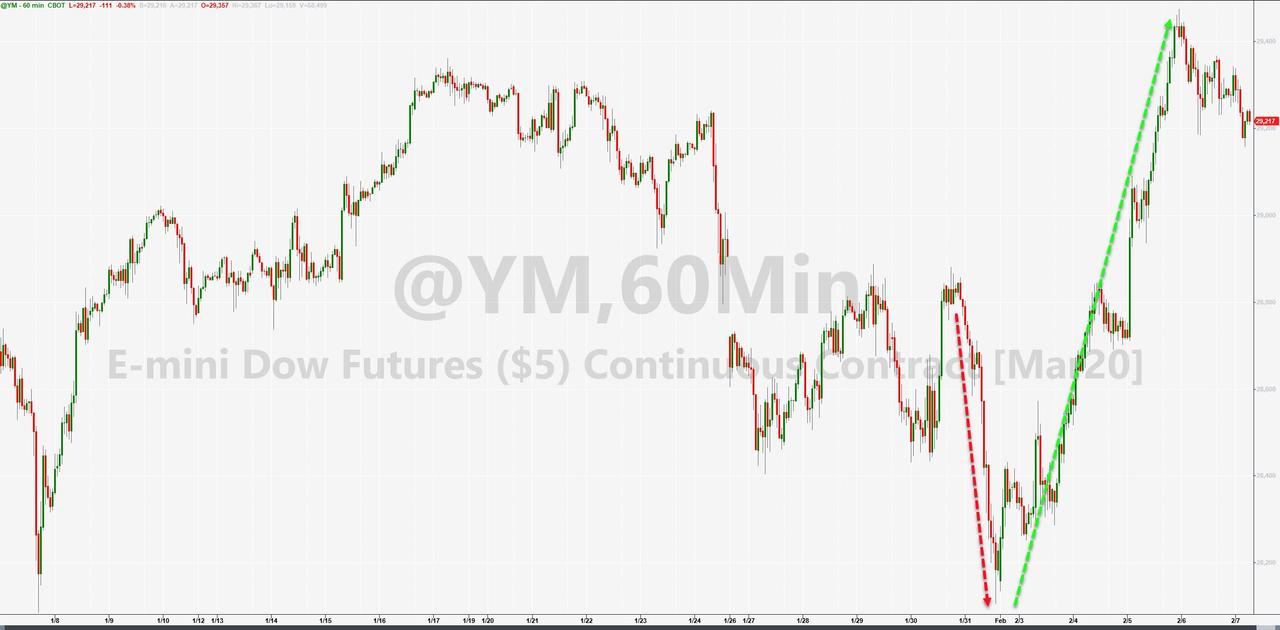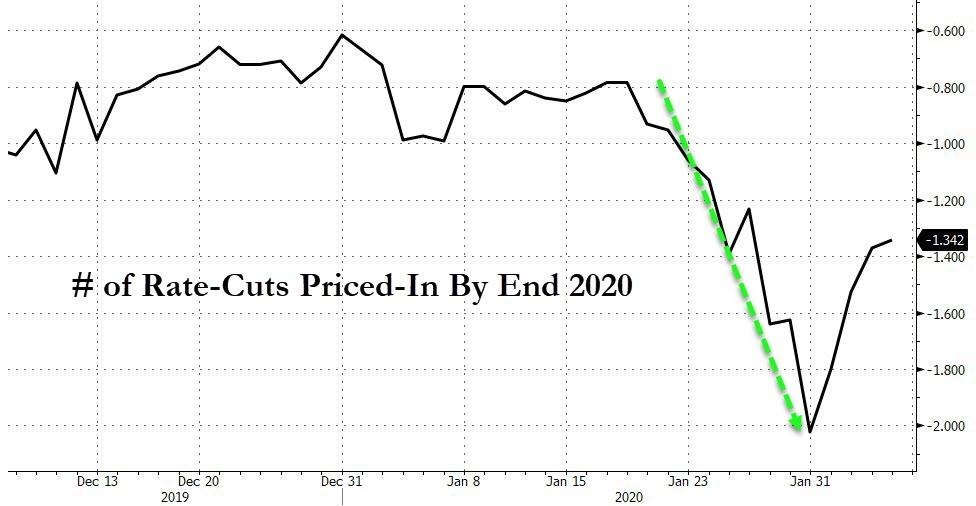Traders Are Calling Central Bankers’ Bluffs… Again
Authored by Richard Breslow via Bloomberg,
-
The S&P 500 has, so far at least, been up every day this week. And achieved a new all-time high.
-
The Shanghai Composite, after Monday’s plunge, rose each day to finish out the week at levels seen only as far back as early December — when it began its big run.
During these moves, we have spent a lot of time trying to come up with suitable explanations for the strength, let alone resiliency, of these markets in the face of really disturbing news.
Obviously investors must be bullish. And are so despite some pretty eminent and respected economists warning that this is getting way out of control. And valuations making no sense given the forecast outlook. It’s making me think back to last Friday, when the stock market got whacked. What a buy-the-dip opportunity that turned out to be. A 3%-plus snip over the course of a single week is a home run on any occasion. Caveat: we still have to get through today.
The main reason we had that Jan. 31 sell-off (which seems like a long time ago, doesn’t it?) was uncertainty over where Chinese markets would open after their long hiatus. How orderly things would function. But also, and this is the point, what if there was more bad news while exchanges were closed for the weekend?
Bad news was assumed to be just that. We weren’t trying to explain it away with unsupportable arguments about this all being temporary and obviously contained. (Subtext: Over there.) This week the market has clearly reverted to the old “bad news is good news” playbook. I want to see which of these two assumptions holds true through this session. It will inform trading going forward.
There is, of course, the matter of non-farm payrolls to cloud the matter. But it still should be possible to get a sense of where we stand on this question, which is an important one. This afternoon will matter. Central banks will do what they have to when push comes to shove, but most of them don’t want to. Fed speakers are doing their best to stick to the on-hold mantra, which given U.S. numbers is appropriate. Chairman Jerome Powell’s congressional testimony next week is well-timed given how markets are trading.
ECB President Christine Lagarde isn’t a clone of Mario Draghi. Her comments this week about having few monetary stimulus options left after the years of fighting the financial crisis Europe is still struggling from are true. And, given the industrial production numbers we saw this morning, made all the more worrisome. But I couldn’t help thinking they were also meant to be a reminder to those buying the “undervalued” Stoxx 600, which itself is up 3% this week. The U.S. had its Iowa debacle. Germany had a scarier one in Thuringia.
In a very real sense, traders are trying to call their central bankers’ bluffs. And are building in rate cuts to prove their points. It’s worked before and as any Bayesian believes, it’s worth thinking it can work again. So the old adage of, “if you liked it up there, you’ll love it down here” remains the operative practice. And, that is what keeps those who might be tasked with cleaning up any major stumble up at night.
Ten-year Treasuries have failed miserably trying to get back above 1.70%. The technical resistance right in front of it proved too difficult to surmount. Remember how it traded there should we revisit that level at some point. It’s shaping up to be big. On the downside, 1.50% is equally huge support. Maybe even more powerful. And until either side breaks we will have a clear, and tradable, range.
Tyler Durden
Fri, 02/07/2020 – 08:16
via ZeroHedge News https://ift.tt/2S5e2mk Tyler Durden

